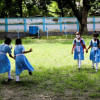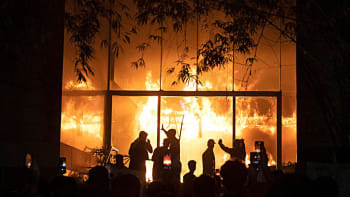Is a policy directive enough to stop school bullying?

The Ministry of Education has issued the "Policy for the Prevention of Bullying and Ragging in Educational Institutions, 2023" to prevent bullying in educational institutions and punish the perpetrators around Bangladesh. But how far can a central directive go in achieving the results? What else should be done?
Bullying among peers is a common antisocial behaviour among children and adolescents in most cultures. When this happens in a school setting, supposedly a safe and stimulating environment where children would learn, thrive and flourish, this is unacceptable. Yet, this is far too common a situation.
School bullying of a student takes many forms: corporal punishment as a disciplinary measure; physical violence; verbal humiliation; gender-based violence; and abuse prompted by personal attributes such as disabilities, and any other distinguishing features such as physical appearance, ethnicity, language or socioeconomic background. The perpetrators are not just the peers, but sometimes teachers, administrators, and school staff.
A Unicef survey in Bangladesh in 2019 indicated that a quarter of the children of 10-17 years of age have been victims of bullying. This is likely to be a large underestimate. The prevalence and impact of bullying are difficult to quantify because of its interpersonal nature, the diverse ways in which it is manifested, not often overt, and the immediate and longer-term effects that are not easy to detect.
The problem is not new; it has been the subject of public debate, received media attention, and even attracted judicial interventions. There have also been regulations and directives issued by the education authorities regarding physical violence and verbal abuse of students by teachers. In a way, it is surprising that a policy now has been issued regarding this long-standing and pervasive phenomenon. The question is if and how the new directive can make a difference.
Looking at the pattern of bullying and transgressions of student safety and rights at different levels of education, a pattern can be observed. At the tertiary level, it is the ruling regime-supported student organisations that are involved in various illegal activities and in exercising control over the general student bodies. Bullying and violence in these circumstances can be restrained only by a political decision to cut loose the ties of political protection and patronage to the student wings and make them subject to the normal academic code of conduct.
Over two decades ago, the Education Policy, 2010 recognised the problem and provided some guidelines as solutions. For example, it suggested initiating student welfare and counselling services at all educational levels, with designated teachers to be trained to deliver counselling (Chapter 22). A working committee would also be formed with teachers, guardians, students and community representatives to improve the (learning and physical) environment in each school at primary and secondary levels. For higher education institutions, action plans will be prepared to take effective measures (Chapter 22). It also suggested that codes of conduct be adopted for teachers and learners at all levels of education, a purpose of which would be to ensure that students "do not face any physical or mental tortures" (Chapter 28).
The authorities have not taken the necessary steps to implement these policy recommendations. The most egregious incidents that drew public and media attention prompted judicial intervention. On October 7, 2019, Abrar Fahad, a student of Bangladesh University of Engineering and Technology (Buet), was beaten to death by the activists of the student wing of the ruling party (BCL) for allegedly making a post on Facebook that was critical of the government. The High Court then directed the government to form within three months anti-bullying committees at all educational institutions, especially universities and colleges. No systematic action followed this court ruling.
On August 21, 2021, the High Court bench issued a ruling asking the authorities concerned to explain their inaction in stopping bullying at educational institutions. Then, on February 16 this year, the High Court sounded alarm about the physical torture of a female student of the Islamic University in Kushtia allegedly by a group of BCL members. The current policy directive appears to be a belated and hesitant response to the judicial observations and public concern.
Looking at the pattern of bullying and transgressions of student safety and rights at different levels of education, a pattern can be observed. At the tertiary level, it is the ruling regime-supported student organisations that are involved in various illegal activities and in exercising control over the general student bodies. Bullying and violence in these circumstances can be restrained only by a political decision to cut loose the ties of political protection and patronage to the student wings and make them subject to the normal academic code of conduct.
There is a gender and sexual dimension to bullying, ragging and intimidation, which cuts across the types and levels of institutions. Girl students are especially vulnerable in the prevailing patriarchal norms and values in society. Mindset, customs and habits of teachers, institutional managers, students – both boys and girls – and families of students are complicit, directly or indirectly, in creating and maintaining the environment that makes girls vulnerable.
There is the common behaviour pattern and psychology of children and adolescents, often characterised by jealousy, rivalry, selfishness, insecurity and a lack of self-esteem, that lead young people to antisocial behaviour and picking on those who seem to be different or weak. This situation is commonly evident at the primary and secondary school levels. The educational experience of students in the classroom and outside, and the extracurricular activities need to recognise this reality. Teachers, parents, and school administrators have to be alert to the situation and need to examine their own attitudes and values in this respect. The school experience should also nurture among learners empathy, appreciation of diversity, and respect for differences.
It is in the sphere of children and teenage behaviour patterns and the need for guidance, counselling, support, and learning the norms of social interaction as children grow up that the policy guidance and various measures proposed are likely to be particularly relevant. In respect of the politics-generated misconduct at the tertiary institutions, and the gender-related vulnerability of girl students, the policy directives can be of help only to the extent that these are supported by policy shift and mindset change beyond the school premises, particularly at the higher tiers of political decision-making.
The social and cultural conditions that have fostered the environment for bullying and the values that allow tolerance of such behaviour are alive and well. So is the political culture that has prevented the efforts to change the conditions. The key actors have to recognise these obstacles and find ways to work around them to implement the policy.
Dr Manzoor Ahmed is professor emeritus at Brac University, chair of Bangladesh ECD Network, and vice-chair of the Campaign for Popular Education (CAMPE). Views expressed in this article are the author's own.

 For all latest news, follow The Daily Star's Google News channel.
For all latest news, follow The Daily Star's Google News channel. 










Comments